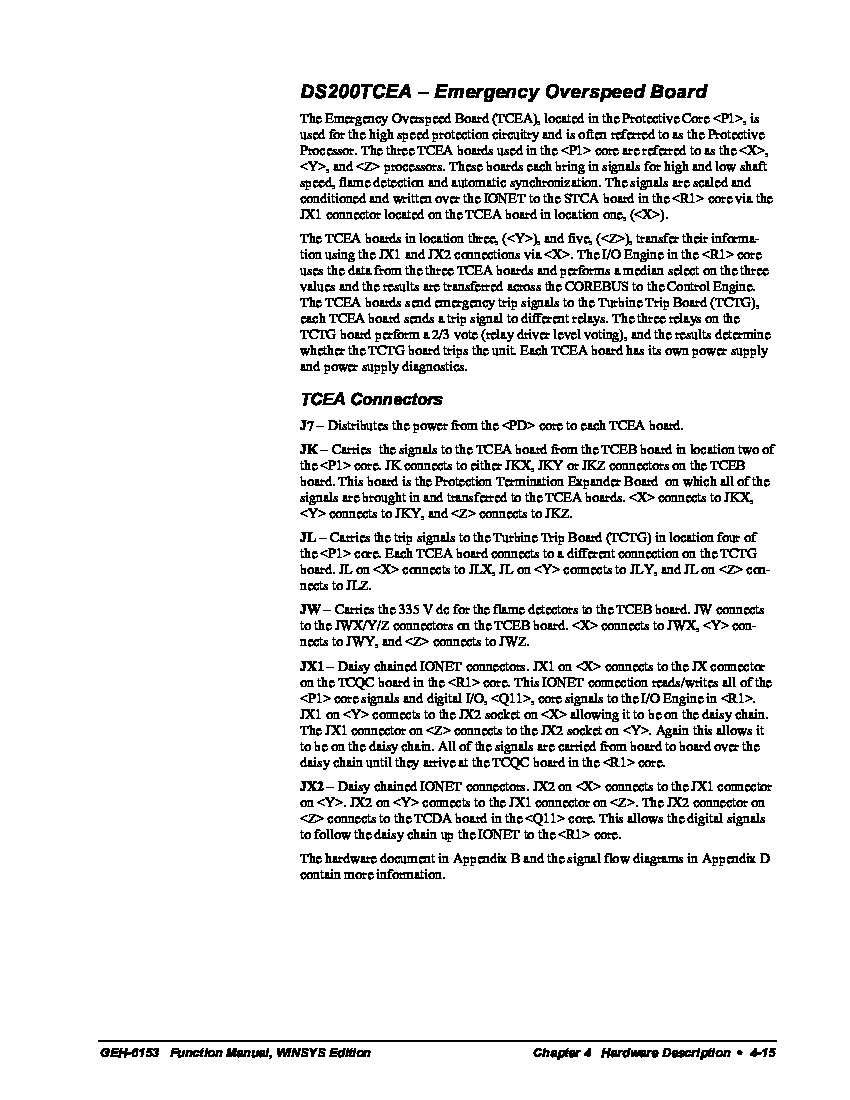About the DS200TCEAG2BTF
This DS200TCEAG2BTF printed circuit board product offering from trusted automated industrial provider General Electric was specifically developed for their Mark V Turbine Control System Series, for the specific functional role of an Emergency Overspeed Board. This DS200TCEAG2BTF product offering's greater Mark V Series is considered to exist as a now-obsolete legacy product series due to its eventual manufacturing discontinuation which took place in the many years following its initial release. The Mark V Series that this DS200TCEAG2BTF Board belongs to, while a now-obsolete product series, is somehow still an updated series as it exists as one of the final General Electric Mark product series to make use of their Speedtronic control system technology first introduced alongside the rollout of the Mark I in the later 1960s. This DS200TCEAG2BTF printed circuit board product offering was specifically developed to exist as an Emergency Overspeed Board, although the original product of this Mark V Series is the DS200TCEAG2 parent Emergency Overspeed Board missing all three of this DS200TCEAG2BTF product's significant revisions.
Hardware Tips and Specifications
This DS200TCEAG2BTF PCB's assembly is introduced to its intended Mark V Series functional role through its inclusion of a series of functionality-inducing hardware components and component specifications. The GE Emergency Overspeed Board DS200TCEAG2BTF features one microprocessor and sockets for multiple erasable programmable read only memory (EPROM) modules. It also contains 3 fuses, 30 jumpers, and 2 bayonet connectors. The 30 jumpers on the board enable the installer to configure the board to operate exactly as required for the drive. When the original board is installed, the operator views the jumper descriptions provided with the written material supplied with the board. The installer can move the jumpers to customize the configuration values, as needed. When the board is shipped, the jumpers are in the default positions. The default positions are configuration settings typically used for processing. Luckily enough for the sake of this DS200TCEAG2BTF personalized product page, this DS200TCEAG2BTF PCB's connectors are well-described in the DS200TCEAG2BTF instructional manual attached above. Each of these connectors are accompanied by their own factory-printed nomenclature label, as with any hardware component existing within the greater Mark V Turbine Control System Series. The connectors in this DS200TCEAG2BTF PCB's assembly include:
- The J7 TCEA Board Power Distribution Connector
- The JK TCEA and TCEB Board Expansion Signals Connector
- The JL TCTG Board Turbine Trip Signals Connector
- The JW TCEB Board Flame Detection Signals Connector
- The JX1 and JX2 IONET Signals Daisy-Chained Connectors
Each of the above-listed connectors in the assembly of this DS200TCEAG2BTF printed circuit board have been named through a combination of their factory-printed nomenclature labels, their Mark V Series compatible products and interfacing potentials, and finally their specific Mark V Series intended applications. When the board must be replaced, one task is to remove the old board and place the replacement board side by side. Then, inspect the positions of the jumpers on the old board and set the jumpers on the replacement to match them. In this way, the new board has a matching configuration and will operate with the same configuration. If you suspect the board has stopped processing or that some of the functions of the board have stopped while others have continued, a first troubleshooting step is to check the fuses. The fuses protect the board from over voltage conditions and voltage spikes that occur when power is present in the drive. Locate the 3 fuses and if the element inside the fuse is blown, it is a simple fix to replace the fuse. However, make sure the new fuse matches the broken fuse in type and current rating. While this DS200TCEAG2BTF devices fuses are certainly important to its voltage limitation processes, they are truly only one part of a greater voltage suppression strategy involving the adoption of Mark V Series-standardized voltage-limiting hardware components into its normal Mark V Series assembly.














